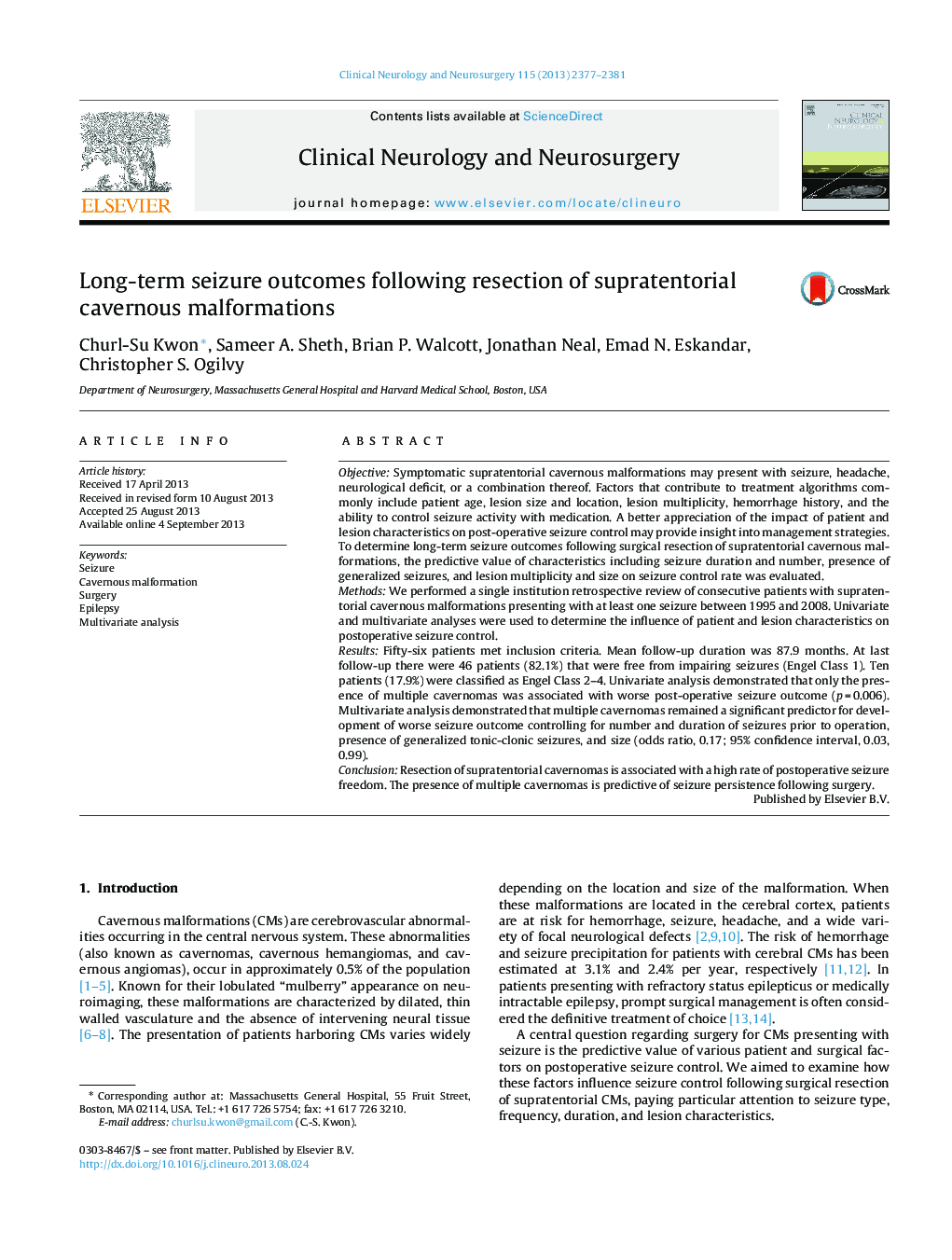| کد مقاله | کد نشریه | سال انتشار | مقاله انگلیسی | نسخه تمام متن |
|---|---|---|---|---|
| 3040559 | 1184740 | 2013 | 5 صفحه PDF | دانلود رایگان |

ObjectiveSymptomatic supratentorial cavernous malformations may present with seizure, headache, neurological deficit, or a combination thereof. Factors that contribute to treatment algorithms commonly include patient age, lesion size and location, lesion multiplicity, hemorrhage history, and the ability to control seizure activity with medication. A better appreciation of the impact of patient and lesion characteristics on post-operative seizure control may provide insight into management strategies. To determine long-term seizure outcomes following surgical resection of supratentorial cavernous malformations, the predictive value of characteristics including seizure duration and number, presence of generalized seizures, and lesion multiplicity and size on seizure control rate was evaluated.MethodsWe performed a single institution retrospective review of consecutive patients with supratentorial cavernous malformations presenting with at least one seizure between 1995 and 2008. Univariate and multivariate analyses were used to determine the influence of patient and lesion characteristics on postoperative seizure control.ResultsFifty-six patients met inclusion criteria. Mean follow-up duration was 87.9 months. At last follow-up there were 46 patients (82.1%) that were free from impairing seizures (Engel Class 1). Ten patients (17.9%) were classified as Engel Class 2–4. Univariate analysis demonstrated that only the presence of multiple cavernomas was associated with worse post-operative seizure outcome (p = 0.006). Multivariate analysis demonstrated that multiple cavernomas remained a significant predictor for development of worse seizure outcome controlling for number and duration of seizures prior to operation, presence of generalized tonic-clonic seizures, and size (odds ratio, 0.17; 95% confidence interval, 0.03, 0.99).ConclusionResection of supratentorial cavernomas is associated with a high rate of postoperative seizure freedom. The presence of multiple cavernomas is predictive of seizure persistence following surgery.
Journal: Clinical Neurology and Neurosurgery - Volume 115, Issue 11, November 2013, Pages 2377–2381